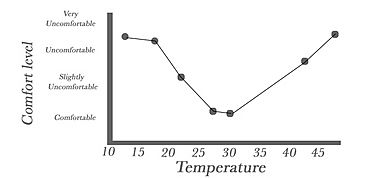Comfort facts for kids
Comfort is a nice feeling of being at ease. It can be about your body feeling good or your mind feeling calm. When you are comfortable, you usually don't feel any pain or stress. If you are not comfortable, you might feel "uncomfortable" or have "discomfort."
You can feel mentally comfortable by doing things you enjoy. This could be remembering happy times, having familiar things around, or eating your favorite foods. Comfort is very important in health care. Helping sick or hurt people feel comfortable can help them get better faster. When people are surrounded by things that make them feel good, they are often said to be "in their comfort zone." What makes someone feel comfortable can be different for everyone.
When we say someone is "comforting" another person, it usually means they are helping someone who is sad or in pain. It's like giving consolation or solace. But comfort can also mean making someone feel even better when they are already okay. For example, a chair might be fine, but adding a soft pillow makes it even more comfortable. Something that makes you feel extra good, even if you weren't uncomfortable before, can be called "comfy."
Contents
What Comfort Means
Scientists have studied the feeling of comfort. They found that comfort is different for each person. But some types of comfort are important for almost everyone. These often include physical comforts like touch, certain foods, and feeling the right temperature.
Comfort from Touch
Contact comfort is the good feeling you get from someone's touch, like a parent's hug. This kind of comfort is very important for how children grow and develop.
Harry Harlow's Study
A famous study about how children develop was done by Harry Harlow with monkeys. He raised baby monkeys with fake mothers. Some fake mothers were made of wire, and others were covered in soft cloth. Both types of mothers could give milk.
The cloth mother was meant to show comfort. The baby monkeys often chose the cloth mother, even if the wire mother had food. This showed that having basic needs like food is important. But it also showed that feeling close and loved is just as important.
The monkeys in the study who grew up without this comfort often acted strangely. This experiment helped us understand how important comfort and warmth are for kids growing up.
Comfort from Food
Comfort foods are special foods we eat to feel happy and good. This feeling often comes from foods we liked when we were kids. Or it can be from foods we just really enjoy.
Why We Choose Comfort Foods
People often choose comfort foods because they connect them to happy memories. For example, chocolate is a popular comfort food. It tastes sweet and is often given as a gift or reward.
The time of day can also affect when we eat comfort foods. Many people eat simply because it's "lunch time." Only about 20% of the time do people eat because they are truly hungry.
| Favorite comfort foods |
Percent mentioning item as their favorite comfort food |
|
|---|---|---|
| Snack- related foods |
Potato chips | 23 |
| Ice cream | 14 | |
| Cookies | 12 | |
| Candy/chocolate | 11 | |
| Meal- related foods |
Pasta or pizza | 11 |
| Steak or beef burgers | 9 | |
| Casseroles or side dishes | 9 | |
| Vegetables or salads | 7 | |
| Soup | 4 |
What Foods We Prefer
Comfort foods can be split into two groups: snacks and meals. If you ate a lot of snacks as a child, you might prefer snack-related comfort foods later in life.
Food preferences can also differ between boys and girls, and younger and older people. Girls and younger people often prefer snack-related comfort foods. Boys and older people often prefer meal-related comfort foods.
Comfort from Temperature
Thermal comfort is how satisfied you feel with the air temperature and humidity around you. Psychologists did a study to find the most comfortable temperature. People answered surveys as the temperature changed.
They found that many people didn't have a strong opinion about a certain range of temperatures. This is called temperature neutrality. It means your body's metabolism (how it uses energy) is working at the same rate as the surrounding temperature. The average comfortable temperature is about 30 °C (86 °F). Temperatures that are too hot (35 °C (95 °F) and above) or too cold (12 °C (54 °F) and below) are usually uncomfortable for most people.
Thermal Neutrality
Thermal neutrality is a temperature range where you feel neither comfortable nor uncomfortable. Your body is burning calories at the same rate as the temperature around you. This is usually around 24 °C (75 °F) (room temperature). People often don't have a strong feeling about the temperature in this range. Farmers also use thermal neutrality to keep animals like cattle comfortable. This stops them from getting cold stress.
Everyday Uses
- Floor temperature: Floors that are too hot or too cold can make you uncomfortable. People might wear light shoes or have heated floors to help with this.
- Ventilation: If a room doesn't have good air flow, it can get too hot. Windows and fans help create air movement. Air conditioning also helps keep rooms cool.
Comfort from Clothing
Comfort is also linked to how we feel about our clothing. After food, clothes are one of the most important things for comfort. Clothing gives us comfort in many ways: how it looks, how it feels, how warm it keeps us, how it handles moisture, and how it presses against our skin.
- Aesthetic comfort: This is about how clothing looks. Things like color, fabric style, how it fits, and if it's in fashion can make clothes feel comfortable. Looking good in your clothes can make you feel mentally and socially comfortable.
- Thermoregulation and thermophysiological comfort: This is about how well clothing helps your body control its temperature and moisture. It means the fabric helps keep your body's heat and moisture balanced with the environment. The type of fabric matters a lot. Natural fibers like cotton let air through and soak up moisture. Synthetic fibers like polyester push water away and don't let air pass easily. Choosing the right clothes for different weather is important.
- Thermal comfort: This is a main part of feeling good physically. It's about how well clothing helps you stay "neither too cold nor too hot." Around 30 °C (86 °F), the human body feels at ease. Clothes help keep your skin dry and cool. They stop your body from getting too hot and also block heat from the environment.
- Moisture comfort: This is about stopping you from feeling damp or sweaty.
- Tactile comfort: This is about how the fabric feels against your skin. It's about how smooth, rough, soft, or stiff the fabric is. Some people might feel more discomfort from certain textures than others. Things like allergies, tickling, itching, or the fabric's weight can affect this. Some fabrics, like fleece or velvet, feel very comforting to touch.
- Pressure comfort: This is how your skin's pressure sensors react to clothing. Fabrics with stretchy materials like Lycra can feel more comfortable because of this. How the fabric is made (like if it's tight, loose, heavy, or light) also affects this feeling.
See also
 In Spanish: Confort para niños
In Spanish: Confort para niños
- Comfort noise, a quiet background sound used in radio to fill silent times
- Comfort object, a special item that helps someone feel calm and safe
- Comfort zone, a mental space where a person feels secure and in control
- Consolation, giving comfort to someone who is sad or upset
- Contentment, a feeling of quiet happiness and satisfaction
- Pleasure, a feeling of enjoyment or happiness
- Katharine Kolcaba's theory of comfort, a nursing idea about how to provide comfort





